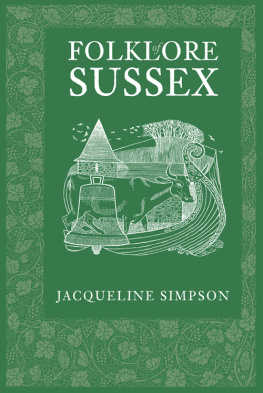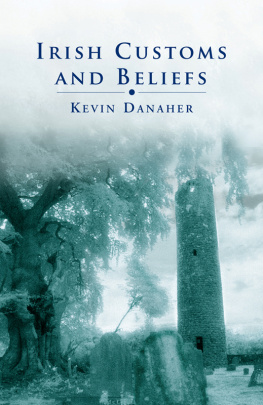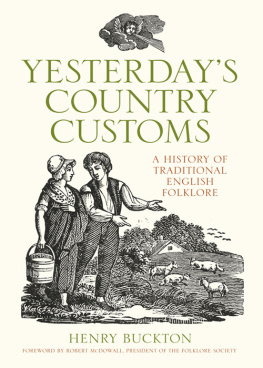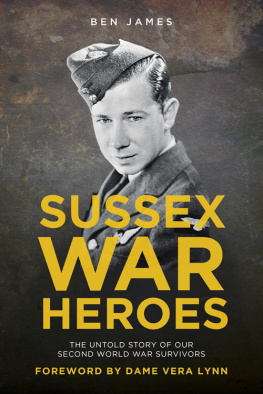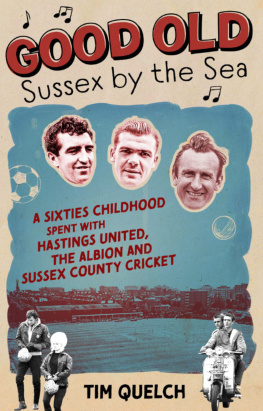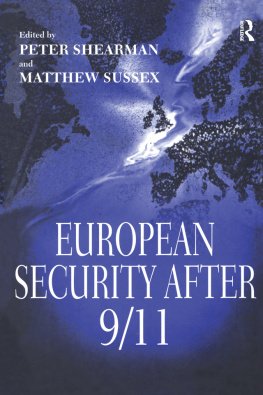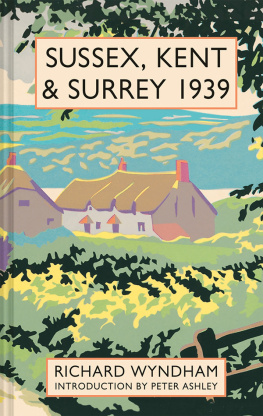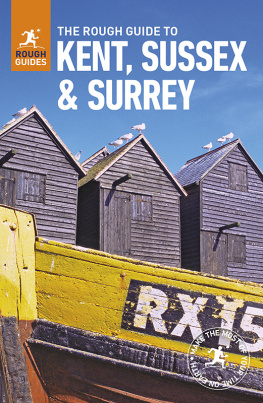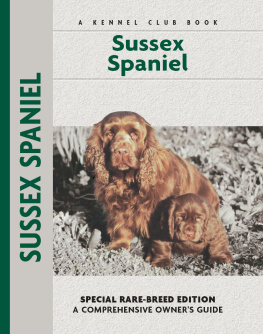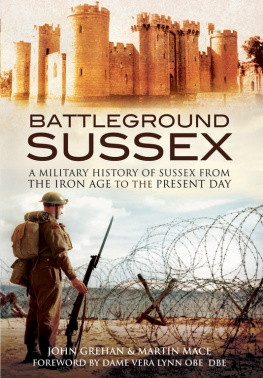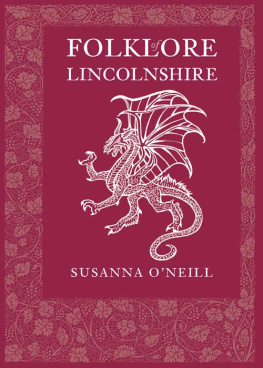FOLKLORE
of
SUSSEX

FOLKLORE
of
SUSSEX
JACQUELINE SIMPSON

Cover illustrations by John Gay Galsworthy
Originally published by B.T. Batsford, 1973
This edition published 2009
Reprinted 2013
The History Press
The Mill, Brimscombe Port
Stroud, Gloucestershire, GL5 2QG
www.thehistorypress.co.uk
This ebook edition first published in 2013
All rights reserved
Jacqueline Simpson, 1973, 2002, 2009, 2013
The right of Jacqueline Simpson to be identified as the Author of this work has been asserted in accordance with the Copyright, Designs and Patents Act 1988.
This ebook is copyright material and must not be copied, reproduced, transferred, distributed, leased, licensed or publicly performed or used in any way except as specifically permitted in writing by the publishers, as allowed under the terms and conditions under which it was purchased or as strictly permitted by applicable copyright law. Any unauthorised distribution or use of this text may be a direct infringement of the authors and publishers rights, and those responsible may be liable in law accordingly.
EPUB ISBN 978 0 7524 9999 4
Original typesetting by The History Press
Contents
Foreword to the First Edition
In his monumental work The British Folklorists (London, 1968), Professor Richard M. Dorson sadly refers to the fading of the British folklore movement at the time of the First World War. Later he pays tribute to the work of Katharine Briggs, Iona and Peter Opie, and one or two other scholars. Granting that there is substance in his basic view, it might now seem more appropriate to have used the term temporary eclipse.
Since his book was published we have seen the continued achievements of Katharine Briggs, and the Opies have added to their researches in the field of childrens lore. Yet it is true that much remains to be done, and a public appeal on the day that I write this underlines the need for still greater efforts in recording the lore and games of schoolchildren. It is not necessary to confine such an appeal to the activities of the young since, in times of ever more efficient and all-pervading mass communications, the fluidity of tradition is greatly intensified. This appeal drew particular attention to the influence of television and advertising jingles, but there is no need to stress the effect of numerous modern pressures on tradition as a whole. This is not to say that folklore and custom disappear: rather that the new or the variant is superimposed on the old with increased rapidity.
This volume by Jacqueline Simpson is therefore especially welcome, not only because of its wide scope, which can be seen from a glance thorough her own Introduction, but also because, for the first time, it brings together in an easily accessible form the folklore of Sussex. She has assembled material not hitherto published, or drawn from widely scattered sources, and presented it in such a way as to stimulate interest and collection in her own county and elsewhere. This, as I have stressed, is essential and her volume is prepared in a manner calculated to entrance and arouse the enthusiasm of the general reader and the scholar. Both have their part to play.
Jacqueline Simpsons own scholarship is already well known to those familiar with her other work, notably the Penguin English Dictionary and her attractive and readable presentation of Icelandic folktales. She combines a delightful style and charming wit with meticulous scholarship and the present volume is a fitting complement to her accomplishments in other fields. She has for many years been a member of the Folklore Societys Committee and her interesting and incisive contributions to the Societys Journal are much appreciated by members. It is therefore a particular pleasure to me to welcome this brilliant young scholar as the first contributor to what it is hoped will be built into a comprehensive series on the folklore of the British Isles.
Venetia Newall
London University
February 1973
Acknowledgements
Thanks are due to the following authors and publishers for permission to quote from the books and journals mentioned (page references are to Folklore of Sussex): Bob Copper, A Song for Every Season, Wm. Heinemann Ltd (1971) for pages 11415, 1223 and 1302; A. Beckett, The Wonderful Weald, Mills & Boon Ltd (1911) for pages 1634; L. Grant, A Chronicle of Rye, Noel Douglas (1927) for page 36; Folklore (LXIX, 1958) for page 92; W.D. Parish, A Dictionary of Sussex Dialect (revised by Helena Hall), Gardners, Bexhill (1957) for page 36; Sussex County Magazine for pages 378, 50, 56, 67, 6972, 756, 83, 103, 143; West Sussex Gazette for pages 21, 22, 91, 1001, 109, 1445, 154, 1612; Sussex Notes and Queries for page 68; L.N. Candlin, Tales of Old Sussex (1985) for pages 1623; M. Wright Cuckfield, An Old Sussex Town, C. Clarke, Haywards Heath (1971) for pages 478; M. Wyndham, Mrs Paddick, Chapman & Hall Ltd (1947) for pages 102 and 105. Thanks also toTony Wales for providing many of the illustrations.

Introduction
There have been many books written about Sussex, its history and the beauties of its countryside, but in all of them its folklore, legends and folk-customs receive only minor and incidental mention, or, at the best, a single chapter. Yet the foundations for the study of Sussex lore had been well laid in the nineteenth century by three pioneers whose essays, though brief, are crammed with valuable material M.A. Lower, who recorded several local legends (two of them verbatim) in his Contributions to Literature (1854) and in an article in Sussex Archaeological Collections XIII (1861); Mrs Charlotte Latham, who published a collection of West Sussex Superstitions in Folk-Lore Record I (1878); and F.E. Sawyer, who listed many seasonal customs in Sussex Archaeological Collections XXXIII (1883), and also produced a pamphlet on Sussex Place-Rhymes and Local Proverbs (1884).
This promising beginning, however, was never systematically followed up, though many individual items appeared in various scattered sources. Local historians describing their own towns and villages would often include two or three local tales and superstitions, while some of the more colourful legends attached to topographical features naturally appear again and again in general descriptions of the county. First-hand accounts of customs and festivals are also found in the reminiscences of people who have known rural working-class life from the inside, notably Harry Burstow in 1911 and Bob Copper (1971, 1973, 1976), but books of this type are unfortunately rare. The Sussex County Magazine (192656) includes a good many articles and letters touching on points of folklore; many are of great value, being based on first-hand observation or personal memories, but a few merely repeat, without acknowledgement, material drawn from older printed sources. Of particular interest are the articles contributed by Miss L.N. Candlin to the Sussex County Magazine and to the West Sussex Gazette from the 1940s onwards, since these are drawn from her own family traditions (particularly concerning the Washington, Brighton and Lewes areas), and from oral informants in many parts of Sussex. I am very grateful to her for allowing me the free use of this material, and for supplementing it with conversation and correspondence. Some of her writings have now been collected as
Next page
